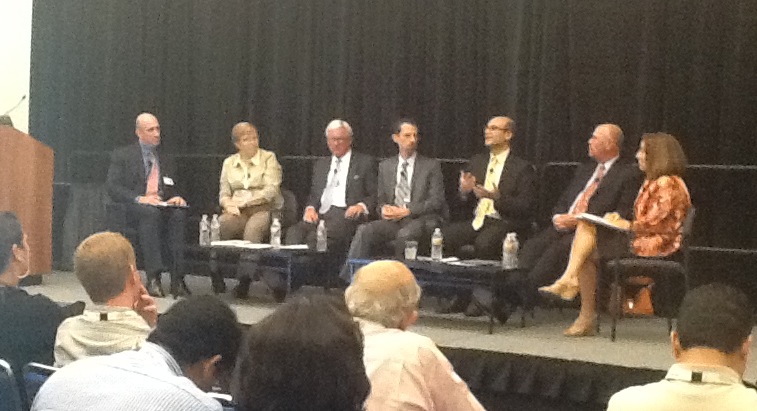Some gems sparkled this afternoon in what otherwise was an unfocused chat. The topic was supposed to be mobile technology adoption by government agencies but instead skidded toward canned talking points from lobbyists.
Some panelists got it right, though. Eric Engleman, senior policy advisor for energy and innovation in the San Diego mayor’s office, zeroed in on two key policy areas that will determine the path government agencies will take regarding mobile applications and devices: open data policies and the development and integration of open source, interoperable software.

Open (or otherwise) data policies determine what, if any, restrictions are placed on data generated and collected by government agencies. In theory, open data policies assume that if information is held by a government agency then it’s in the public domain and should be easily accessible by anyone who might be curious. And easily accessible means online, searchable and organized in a way that quickly presents complete answers, even if the component parts of those answers lie in different departments or agencies.
Local governments are developing open source applications to solve specific problems, such as business permit processing, pot hole patching and data base management. Sometimes, as in Santa Cruz, it’s in cooperation with a foundation like Code for America that was specifically designed to address these opportunities.
One approach San Diego is taking is holding a App Challenge. Organized by the mayor’s office and sponsored by AT&T, the contest offered a prize purse of $50,000 and attracted 78 mobile application entries, ranging from a dog park locator to an end to end earthquake preparedness app to a public transit platform.
AT&T’s Stacey Black, a market development and external affairs executive, talked about the same issue, but saw it as an opportunity for companies that can develop vertical solutions for specific problems. Like Engleman, he thinks the future means fewer fat, proprietary applications that any organization might use (think: Microsoft Word) and thinner, focused apps that solve specific problems.
His example was a wireless bar code scanner that AT&T implemented for Amtrak, adapting it to the railroad’s peculiar operating practices. The result, he said, was that Amtrak was finally able to replace the venerable ticket punches that had been in use for a century and a half or more.
The rest of the panel was less on point, albeit no less entertaining in some regards. A Sprint lobbyist wants government subsidies for devices students can take home because, he says, most learning happens after 7 p.m. I’d like to see the research behind that statement – the logical conclusion would be that we should give every child an iPad and a mobile data account and close down the schools. Let me know how that works out for you.
The T-Mobile lobbyist reminded everyone that they need more cell tower sites. Another T-Mobile lobbyist in the audience helpfully repeated the point.
A gentleman from USC, who was appearing on behalf of the U.S. State Department, had some fascinating things to say about the use of social media in revolutionary times and the efforts – successful, largely – of government like Iran that aggressively censor mobile, Internet and other communication media. It wasn’t what the MobileCon moderators had in mind, I’d bet, when they organized the panel. But it was a graphic illustration of, as the panel title promised, successfully “leveraging mobile communications to help agencies meet their missions.”
